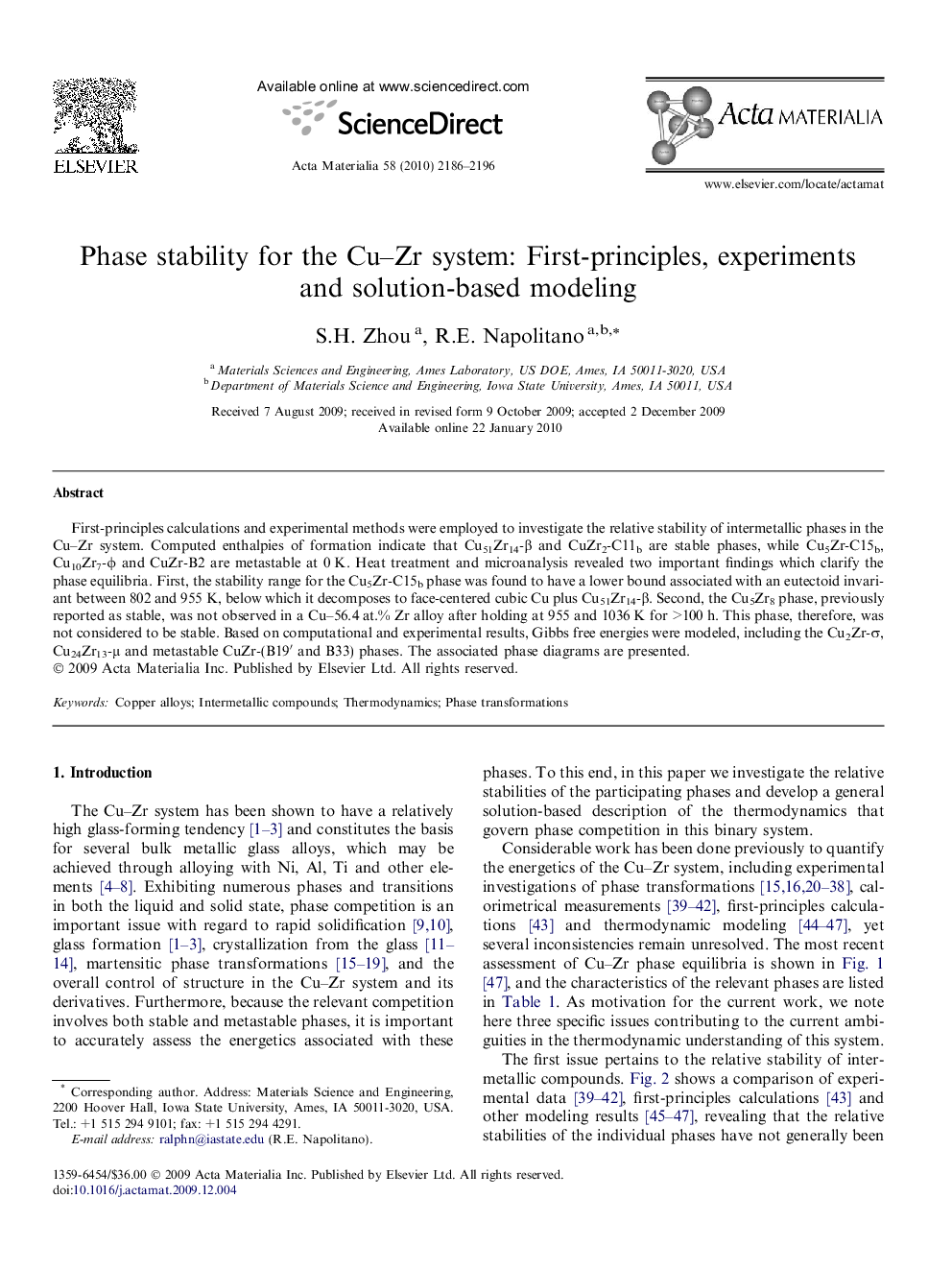| Article ID | Journal | Published Year | Pages | File Type |
|---|---|---|---|---|
| 1447729 | Acta Materialia | 2010 | 11 Pages |
First-principles calculations and experimental methods were employed to investigate the relative stability of intermetallic phases in the Cu–Zr system. Computed enthalpies of formation indicate that Cu51Zr14-β and CuZr2-C11b are stable phases, while Cu5Zr-C15b, Cu10Zr7-ϕ and CuZr-B2 are metastable at 0 K. Heat treatment and microanalysis revealed two important findings which clarify the phase equilibria. First, the stability range for the Cu5Zr-C15b phase was found to have a lower bound associated with an eutectoid invariant between 802 and 955 K, below which it decomposes to face-centered cubic Cu plus Cu51Zr14-β. Second, the Cu5Zr8 phase, previously reported as stable, was not observed in a Cu–56.4 at.% Zr alloy after holding at 955 and 1036 K for >100 h. This phase, therefore, was not considered to be stable. Based on computational and experimental results, Gibbs free energies were modeled, including the Cu2Zr-σ, Cu24Zr13-μ and metastable CuZr-(B19′ and B33) phases. The associated phase diagrams are presented.
